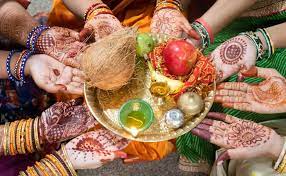Knot forever: essays on contemporary unions
Seventy-six percent of marriages in the US fail; fifty-six percent end in divorce, and twenty percent continue in their union for the benefit of their kids. Is marriage an institution that is overvalued? Is it still applicable in the modern era? According to Eli J. Finkel’s book All or Nothing Marriage, while the number of divorces has grown over the last century, the finest marriages now are superior to those of earlier times. This is an intriguing finding.

Originating in Middle English, the term “marriage” was first used between 1250 and 1300 CE. A magazine claims that the first known marriage occurred in Mesopotamia in 2350 BCE, but the custom of matrimony is probably far older. Parents have always planned weddings as a means of forming an alliance between families that would benefit both parties, mostly economically. Only in the middle of the nineteenth century did love and companionship come into play, but in the modern day, a new kind of marriage has evolved that is focused on personal development, self-esteem, and self-discovery.
Despite having one of the lowest divorce rates in the world—1%—in India during the last 20 years, the number has climbed by 350%. In India, the younger generation, used to social media, cellphones, and the internet, is expected to follow millennia-old customs about marriage. In The Newly Weds by journalist Mansi Choksi, this tension between adhering to tradition and embracing modernity is the central theme. In the midst of social and political upheaval, three young couples reject planned weddings and risk all for genuine love, making the novel a literary inquiry of India as a culture in change through the prism of forbidden love.
In her best-selling autobiography, Maybe You Should Talk to Someone, Lori Gottlieb describes how she worked with her therapist to improve her own sexual relationships. Books and marriages have been salvaged by several therapists. For more than 50 years, Dr. John Gottman has conducted extensive study on partnerships. Together, as clinical psychologists and therapists, he and his spouse Dr. Julie Schwarz established The Gottman Institute and created the Gottman Method of Relationship Therapy. He outlines seven crucial tactics in his book Seven Principles for Making Marriage Work that may be used to assist rectify behaviors that lead to conflict in marriages. Along with quizzes and companion activities, it is jam-packed with useful suggestions.
Eight Dates is a book co-written by The Gottmans that aims to improve your relationship via an entertaining and clever eight-session program that covers important subjects like trust, sex, and money. Their 5:1 ratio really caught my attention—if you want a relationship to survive, you have to do five good things for every one bad one! The ratio of married couples who divorced was 0.8:1. In The Mathematics of Behavior, Earl Hunt proposed a probability formula for predicting the success of marriage. “The equilibrium point for negative marriages is unstable,” the author noted. The point will move in favor of the positive if one partner is even somewhat less negative.
Hunt was trying to say that one should try not to think just bad things. Make it a point to compliment one another, even though it’s necessary to voice your needs and disputes in a healthy way. Every marriage is a work in progress and requires ongoing support; the “perfect marriage” is a myth. A marriage needs constant attention, much as a plant needs water and fertilizer. Be the first to apologize. Accept your partner’s pleasant gestures without passing judgment or being skeptical, whether they originate from the heart or are an attempt to regain your confidence.
“Happily ever after is not by chance, it’s a choice” is something we should never forget. It takes work to navigate the difficulties of long-term commitment, and I hope that books and treatments will provide the tools we need to continue in one of humanity’s oldest institutions.







